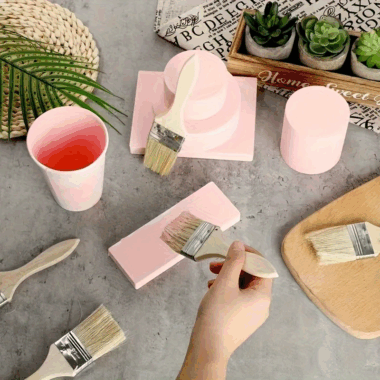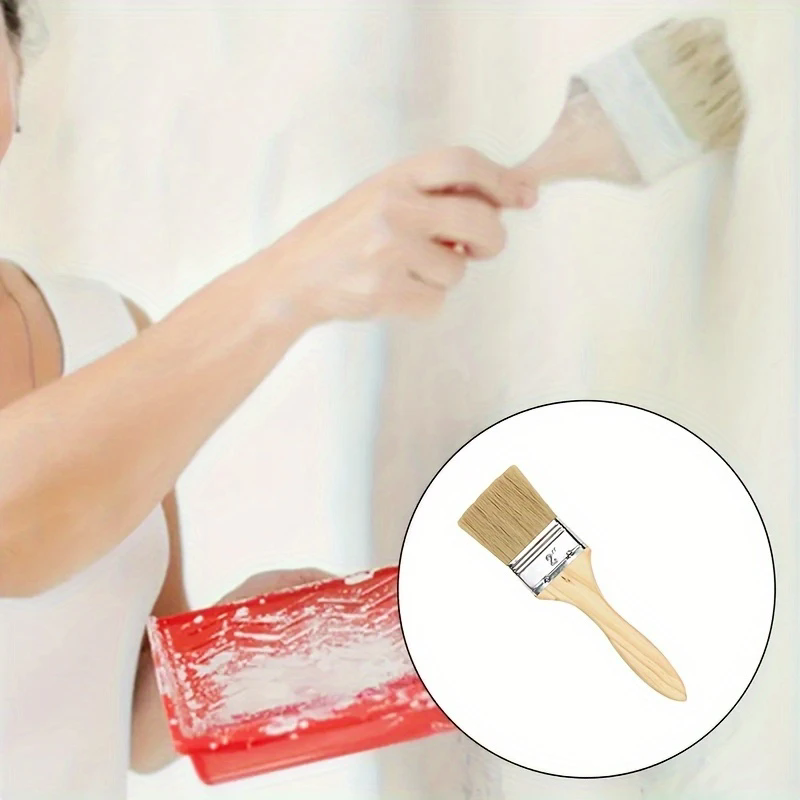Here’s a full SEO-optimized blog post for:
The Ultimate Guide to Paint Brush Types and Their Uses
Meta Description:
Confused about paint brush types? Learn the differences between flat, angled, fan, round, and more. Find the perfect brush for your next painting project.
Choosing the right paint brush isn’t just about size—it’s about shape, bristle type, and function. Whether you’re painting walls, blending colors, or detailing artwork, every brush has a specific job.
This ultimate guide breaks down all the common paint brush types and their ideal uses—so you get better coverage, cleaner lines, and professional-level results.
🖌️ 1. Flat Brush (Straight Edge)
Shape: Square edge, long bristles
Best for:
- Painting large flat areas (walls, ceilings, furniture)
- Varnishing or top coating
- Sharp edge lines when used carefully
Pro Tip: Ideal for strong, consistent strokes and laying down thick paint quickly.
✏️ 2. Angular or Angle Sash Brush
Shape: Slanted bristles for edge precision
Best for:
- Cutting-in edges and corners
- Painting trim or baseboards
- Detail work near windows or molding
Pro Tip: Perfect for DIYers wanting neat, clean corners without tape.
🎨 3. Round Brush
Shape: Rounded tip
Best for:
- Fine lines and controlled strokes
- Detail painting
- Touch-ups
Pro Tip: Artists use round brushes for outlining, small details, and intricate designs.
🌿 4. Fan Brush
Shape: Spread-out bristles like a fan
Best for:
- Blending and feathering techniques
- Dry brushing textures
- Artistic work like clouds, grass, or hair effects
Pro Tip: Fan brushes are used more in art and finishing than house painting.
💧 5. Filbert Brush
Shape: Rounded/oval edge with a flat body
Best for:
- Blending and soft edges
- Curved strokes in fine art
- Smooth color transitions
Pro Tip: A hybrid of flat and round, often used in portrait painting.
🔧 6. Trim Brush
Shape: Short, flat, with stiff bristles
Best for:
- Painting window sills, trim, and narrow areas
- Woodwork and cabinet edges
Pro Tip: Use with enamel or semi-gloss paints for crisp finishes.
🧽 7. Foam Brush
Material: Foam head on plastic/wood handle
Best for:
- Smooth finishes with minimal marks
- Light-duty projects or stains
- Disposable projects like crafts
Pro Tip: Great for stains and sealers, but not for rough surfaces or detailed cutting.
🧵 8. Detail Brush / Liner Brush
Shape: Small and narrow with long bristles
Best for:
- Tiny spaces, lettering, and highlights
- DIY designs or paint-by-number kits
Pro Tip: Often used for final touches in art, crafts, and decorative painting.
🧪 Bristle Type Matters Too
- Natural Bristles (Hog Hair): Best for oil-based paints, varnishes, and shellacs
- Synthetic Bristles (Nylon/Polyester): Ideal for water-based or acrylic paints
- Blended Bristles: Versatile and durable for most paint types
📋 Quick Paint Brush Selection Table
| Brush Type | Best Use Case | Paint Type |
|---|---|---|
| Flat | Walls, furniture, base layers | Water/Oil-based |
| Angled | Corners, trims, edges | Water-based |
| Round | Detail work, outlines | Any |
| Fan | Artistic blending, textures | Acrylic, Oil |
| Filbert | Portraits, curved blending | Acrylic, Oil |
| Trim | Small areas, straight lines | Water/Oil-based |
| Foam | Smooth finish, no brush marks | Stains, Sealers |
| Detail/Liner | Fine detail and highlights | Acrylic, Watercolor |
🧠 How to Choose the Right Paint Brush
- Project type? Interior walls, fine art, craft, or furniture?
- Paint type? Latex, acrylic, oil, or stain?
- Finish desired? Smooth or textured?
- Bristle stiffness? Stiff for rough surfaces; soft for detail work
🎯 Conclusion
The right brush makes painting easier, faster, and cleaner. Whether you’re a contractor, retailer, or hobbyist, understanding paint brush types ensures you deliver quality results every time.
From angled brushes for trim to fan brushes for blending, there’s a perfect brush for every job—just pick wisely.
Would you like this turned into a downloadable PDF guide or formatted as a product selection chart for your website?

















